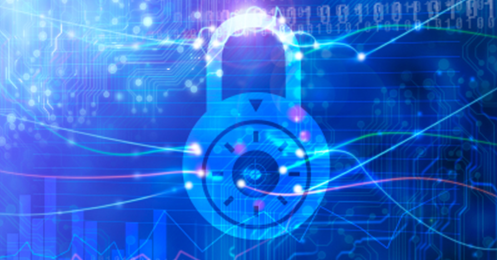
Online Exclusive: Training Next-Generation Cyber Warriors with Advanced Cyber Ranges
Organizations worldwide face a dangerous shortage of cyber warriors who possess the skills required to defend against cyber terrorism. A pragmatic and sustainable new approach is urgently needed to prepare cyber warriors to defend critical infrastructures.

General Keith Alexander, director of the National Security Agency, warned in 2012 that cyber attacks are causing “the greatest transfer of wealth in history.” Too many military organizations and government agencies have answered the cyber defense challenge with taxpayer money, outmoded hardware and expensive consultants. Though it satisfies the business interests of defense contractors, this approach has no hope of keeping pace with the rapid evolution and scale of cyber threats and is destined to fail. Effective cyber security is the product of melding trained people, or cyber warriors, and automated systems into a unified defense.
But organizations worldwide face a dangerous shortage of cyber warriors who possess the skills required to defend against cyber terrorism. Making matters worse, weaknesses and new vulnerabilities continue to pervade critical government and IT infrastructures despite billions of dollars invested in cyber security measures.
Cyber Ranges: Proving Grounds for Cyber Warriors
Cyber warrior training is a critical element of effective cyber security. But implementing large-scale cyber ranges, such as DARPA’s National Cyber Range, is time and cost-prohibitive. Government agencies are now turning to commercial security test solutions that enable quick, compact and cost-effective re-creation of Internet-scale cyber warfare scenarios. The most advanced solutions include comprehensive training curriculum and proven methodologies to develop elite cyber warriors.
With a cyber-range, government, intelligence and military organizations have the resources to rapidly deploy a battle-proven, operationally relevant closed environment that can reflect the entire Internet. In this controlled environment, cyber warriors verify every element within the IT infrastructure under high-stress, real-world conditions. As part of this strategy, real-world, malicious attacks on IT infrastructures must also be replicated.
Just as every military and police force needs a firing range to hone weapon skills and battle tactics, every cyber warrior needs access to a cyber range. Here, commanders can produce the empirically valid war-gaming exercises necessary to develop their troops’ skills and instincts for offensive and defensive action.
In the face of escalating cyber risks, increased public pressure and cuts to defense budgets, a new, more pragmatic, cost-effective and scalable approach is needed to bolster cyber forces and defenses against today’s threats.
Today’s Cyber Range: A Four-Step Approach
The following is a realistic and sustainable four-point strategy for arming organizations to assess, educate and certify a national force of cyber warriors to carry out information assurance (IA), information operations (IO) and mission assurance (MA) duties.
- Modern cyber range deployment: Modern cyber range machines recreate Internet-scale cyber war in a controlled environment, interpret the results and provide the insight required to rapidly respond to threats. They are off-the-shelf systems that are compact, quick to implement and simple to use. An important aspect of a modern cyber range is the breadth and scale to simulate real-world threat scenarios. This includes the innate ability to remain up to date on the latest cyber-threats and to emulate even the largest distributed denial of service (DDoS) attacks known to date.
- Cyber range command and control, maintenance and global threat updates: In distributed cyber range environments, commanders require a centralized unit for command and control. With it, they have the ability to consolidate and standardize cyber security awareness, information sharing, and cyber war-gaming exercises across entire militaries. A central authority will disseminate uniform, perpetually up-to-date global threat intelligence and cyber security expertise to satellite cyber ranges deployed around the world, keeping all cyber warriors prepared to face—or launch—the latest attacks.
- Standardized cyber warrior education: Just as soldiers on the battlefield are assessed and certified for marksmanship, cyber warriors must be educated and put to the test to evaluate and refine their skills. Any educational curriculum adopted should include both self-paced and classroom-based training, combined with standardized, escalating levels of war-game scenarios executed within the cyber range, to allow commanders to certify and develop basic to advanced skills within IA, IO and MA disciplines.
- Measuring and hardening network and application infrastructure resiliency: In addition to cyber warrior training, organizations must continually verify security infrastructure to ensure optimal operation. Attacking defenses is the only way to know with certainty how resilient those defenses are. Hardening IT infrastructure requires the use of a standardized, scientific methodology to measure and certify the performance, security and stability (e.g. resiliency) of every network and data center component, individually and across whole system. Only consistent, disciplined use of a standard measure of resiliency can ensure that organizations and the vendors that supply them maintain the performance, stability and security required to defend vital interests.
As outlined above, a pragmatic and sustainable new approach is urgently needed to prepare cyber warriors to defend critical infrastructures. IT resiliency can be solved with a sustainable scientific approach that leverages new technology and automation to deliver a cyber range that can be deployed quickly. With these steps, government organizations have the ability to defend critical infrastructure by arming cyber warriors with standardized, up-to-the minute IA, IO and MA training, and to harden critical infrastructures against the latest threats.